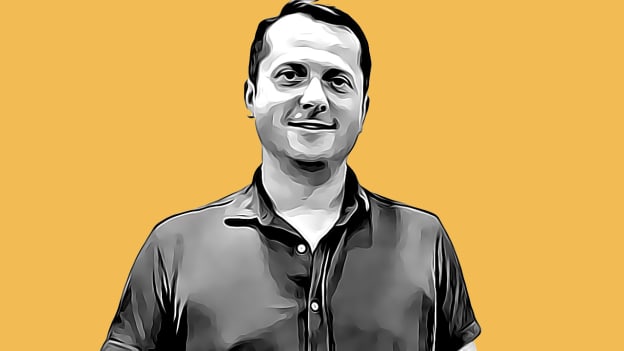Employer branding has a very significant impact on hiring: VMWare's Tom Browne

Tom Browne, based in Singapore, has been leading the Talent Acquisition function for VMware in APJ since 2017. This was following five years at Cisco in various Talent Acquisition Leadership roles and almost a decade on the Agency/Executive Search side.
Tom, hails originally from the UK though, has spent most of his career in Asia Pacific between Singapore, Hong Kong, and Tokyo experiencing the rapid transformation of the Talent Acquisition function across the Asia Pacific region.
Here are the excerpts of the interview.
How do you see the changing role of HR in the age of Artificial Intelligence?
We’re starting to see HR partner closely with the c-suite and other business functions to actively, directly and collectively enhance the employee experience. That’s because the employee experience is now recognized as one of the major factors impacting an organization’s bottom line due to productivity, engagement, collaboration and workplace flexibility.
The mobile and digital revolutions of the past decade have meant that executive leadership has increasingly looked to HR and IT to transform the employee experience – from recruitment to onboarding, and from day two all the way to off-boarding.
This trend is reinforced by findings from a recently commissioned survey by VMware, which found that 90 percent of employees in the Asia-Pacific region believe that their organizations struggle with delivering the optimal digital employee experience. The biggest issue cited is a lack of understanding of what employees want. And it is good news for HR leaders that 86 percent of employees agree that the department should have more responsibility for the digital employee experience.
Here at VMware, the role of HR has undergone significant transformation in recent years. The main purpose of our HR team today is to act as a business partner and drive business transformation and change projects through a ‘consultant’s’ lens. We have therefore spun off the role of “building manager capability” into a specialist group – or center of excellence – to double down on our efforts in this important space. This strategy then frees up HR from much of the tactical day to day execution that comes from the manager capability portfolio and enables our function to help run and progress much broader business initiatives.
The main purpose of our hr team today is to act as a business partner and drive business transformation and change projects through a consultant’s lens
With organizations being disrupted from every angle - from emerging technologies to changing demands of customers, do you think conventional talent acquisition models must change?
In the technology sector, conventional talent acquisition models are certainly long gone. As they compete for the best talent, HR must now pay attention to how their companies show up digitally to potential employees. To put their best foot forward to candidates, firms need to re-evaluate their candidates’ recruitment experience. Can a job application be made via a smartphone? Can the log-in process be easier for video interviews? After a candidate has accepted an offer, are they engaging with the candidate during the time before they start the job?
HR must also go beyond hiring and consider models for retention. For example, all employees expect to have the right tools to get their work done. However, new employees, especially those who are digitally native, often have better experiences in their personal lives – the latest devices, better internet access, new gadgets, and are used to being logged in automatically to their apps. 80 percent of the employees in the region would like to see improvements in having access to applications for their three most important work tasks using their smartphone or tablet.
How do you view the current recruitment and hiring landscape? What has changed?
This is all a matter of perspective. There have never been more digital tools and channels to reach candidates and the information accessible to recruiters increases every day. When I started out as a recruiter in 2003, there was just a fraction of the information available and very few avenues to access talent. But with this new norm comes an ever-increasing complexity that talent acquisition needs to work within. Staying current is critical for success.
What are the top strategies that you follow at VMware to win the war for top talent?
At VMware, we are highly optimistic about the future. We have the right leadership, vision, and strategy that are then all underpinned by our EPIC2 values – Execution, Passion, Integrity, Customers, and Community. As we continue to scale, bringing the best talent that resonates with these values and to execute on our vision and strategy is imperative to our success. We, therefore, ensure a highly interconnected partnership between talent acquisition, our business leaders and other functions like IT. For example, for several years now, we have realigned our organization to our employees’ expectations of flexibility and work-life balance.
By implementing our own Workspace ONE technology and having the relevant HR policies in place, our employees can securely access the information and applications they need to do their jobs anytime and anywhere – and not necessarily in the office.
A second strategy that is particularly key in this region is localization. While we are a Silicon Valley based company and that’s very much a part of our DNA, we operate globally and think locally. Many organizations make the mistake of trying to plug and play global talent acquisition processes in Asia and expect the same results. Balancing global processes alongside processes and platforms tailored for each country is key.
How can HR organizations leverage the power of agile practices in recruitment?
I believe that agility is a mindset and skillset that can be applied to any project. From an HR standpoint, agility is also an acknowledgment that there is no single or one-size-fits-all approach to effectively engaging prospective candidates or delivering a good employee experience. This is especially true today where workforces have a diverse mix of cultures, age groups and ethnicities.
Put it this way, if the majority of your workforce spends most their day away from their desks traveling to and from meetings and your policies and tools are only useful if they are at their desks all day, you greatly limit not only their ability to meet your business goals, but you also drive them to your competitors.
One way to ensure you’re thinking in favor of your employees is to remember the acronym “DEED,” or Delightful Employee Experience by Design. When setting out to define what’s possible for your employees, continuously ask yourself two things: “what would make this job/role delightful to do every day?” and “how is our digital workspace able to help our company attract and retain top talent?”
Agility means thinking about each role in the company and then tuning into the human element, focusing on why, what and how employees do what they do each day. At this point, you’ll be better placed to respond by designing policies and tools that address these needs.
Among the top HR trends that LinkedIn's Global Talent Trends 2019 report identified are soft skills and work flexibility. What are some of the hiring strategies that you follow at VMware to identify soft skills?
A structured interview process that enables a streamlined, unbiased, and comprehensive candidate evaluation leads to an increased quality of hire. We’ve ensured our hiring managers have both the tools and the training to help identify the right talent for the right roles.
How can technologies such as artificial intelligence reshape recruitment, and what it means for the future of jobs?
Most experts agree that AI and robots will help workforces become more efficient, but they won’t replace the human component. The role that algorithms can play in increasing diversity in hiring is a good example. Removing unintended bias, utilizing language neutral verbiage and broadening the talent pools is indispensable in enabling diversity of thought in the talent channel.
Employees who believe their organizations offer a good digital experience are more likely to claim that their organization is a top place to work and has a progressive culture
With its ability to analyze and process data at scale and deliver highly relevant candidate recommendations, AI has the potential to help talent acquisition teams identify and target skilled individuals from historically underrepresented minorities. While AI can increase efficiencies in some areas, the recruitment process will still be reliant on human interaction and there are some things that humans will always be better at – such as negotiation, consultation and interviewing.
While there’s no substitute for regular communication and engagement with employees, AI can also be a supplementary tool to aid retention. At VMware, we use a machine learning tool that pools company data on employee promotions, relocations, hiring, managerial decisions, and compensation and satisfaction surveys with information on the regional standard of living, workforce demand for specific skills and industry changes. The tool can then spot patterns that indicate if an employee might be thinking about leaving and sends notifications to managers so they can intervene.
Given the widening skills gap, there seems to be a lot of focus on employer branding for organizations to persuade qualified candidates. What's your take on this?
Employer branding has a very significant impact on hiring but it would be ineffective without authenticity and localization. An interconnected digital and social media strategy – based on company values – is also essential for reaching qualified candidates. The VMware culture, for example, is not only defined but also lived and breathed every day. Not only do they drive company policy, but they are used to empower employees. We pressed ahead to achieve carbon neutrality and have policies that allow employees paid time off to pursue projects that benefit the community. Many of these – and other – examples are then captured and shared in our annual Global Impact Report or on our Radius blog. We also honor extraordinary employees through our EPIC2 Achievement Awards program.
A good example of employer branding at a local level is our decision to have a different version of our career site in Japan. Channeling Japanese talent to a US-centric site would give significantly less insight into the heart and soul of our Tokyo office as compared to a localized site for Japanese candidates.
Finally, our research also revealed that employees who believe their organizations offer a good digital experience are more likely to claim that their organization is a top place to work and has a progressive culture.
An organization’s commitment to social purpose matters more than ever to its customers, employees, and communities. Prospective candidates also want to know that an organization’s individuals, managers and leaders are transparent with, care for and value one another. Positive actions like investing in the employee experience, being a force for good and employer branding go hand in hand.















